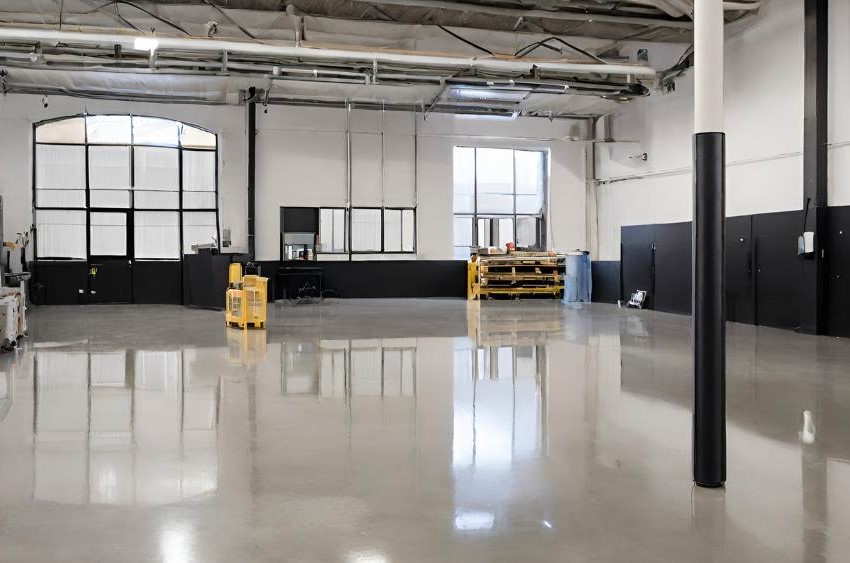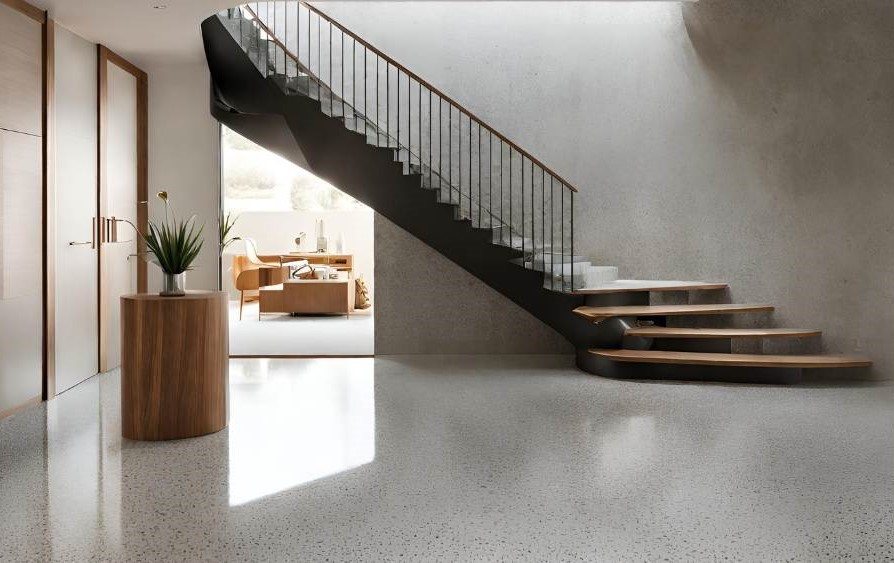While polished concrete naturally has a smooth finish, which might feel slick, there are several ways to enhance its grip and make it safer. We can apply anti-slip treatments or sealers that add a bit of texture to the surface without compromising the polished look. Another option is incorporating fine aggregates or sand into the top layer during the polishing process, which helps improve traction.
Adding a sealant or finish to polished concrete doesn’t necessarily make it more slippery, but it depends on the type of sealant used. Some sealants can enhance the shine and smoothness of the floor, which might feel slicker underfoot. However, there are sealants specifically designed to maintain or even improve slip resistance. We can choose a matte or low-gloss finish, which tends to have more grip than a high-gloss option. Additionally, anti-slip additives can be mixed into the sealant to create a textured surface that reduces the risk of slipping, especially in areas where moisture is a concern.
Shoes with rubber soles are the best option because they provide good grip and traction on smooth surfaces. Avoid wearing shoes with hard, smooth soles, like certain dress shoes, as they can be more prone to slipping on polished concrete. If you’re in a commercial setting or a place where safety is a priority, non-slip shoes, which are designed specifically to prevent slips on slick surfaces, are a great choice. For general home use, just sticking to footwear with good rubber treads should be enough to keep you steady on your polished concrete floors.
Yes, rugs or mats can be used on polished concrete, but to prevent them from slipping, it's important to choose ones with a non slip backing or use a non-slip rug pad underneath. Polished concrete has a smooth surface, so regular rugs might slide around, especially in areas where there’s a lot of foot activity or where moisture is present, like near entryways or in the kitchen. Non slip pads create a grip between the rug and the concrete, keeping everything in place and reducing the risk of tripping or slipping.
Polishing concrete generally results in a smoother, more reflective surface, which can be more slippery compared to honed or brushed finishes. A honed finish, which is less glossy and has a matte appearance, offers more traction because it doesn’t have the same level of smoothness as polished concrete. A brushed finish, which involves creating fine, textured lines on the surface, provides even more grip, making it one of the least slippery options. So, while polished concrete gives you a sleek, shiny look, honed or brushed finishes are better if you’re concerned about slipperiness. However, you can still make polished concrete safer by applying anti-slip treatments or choosing a lower gloss level


